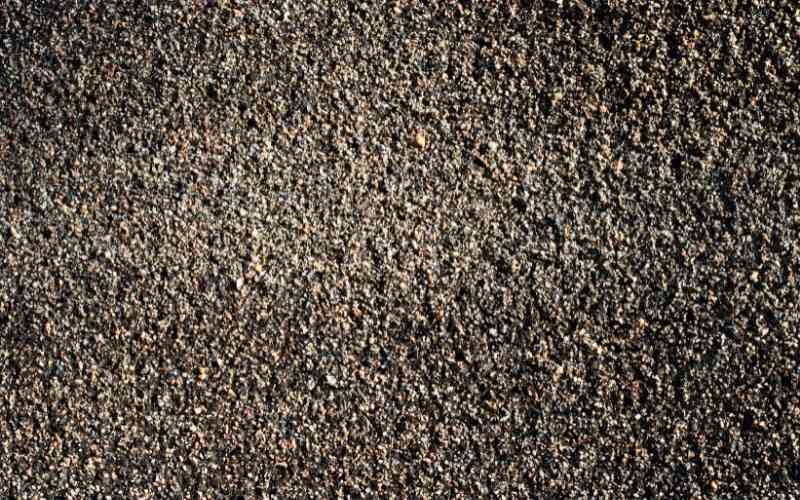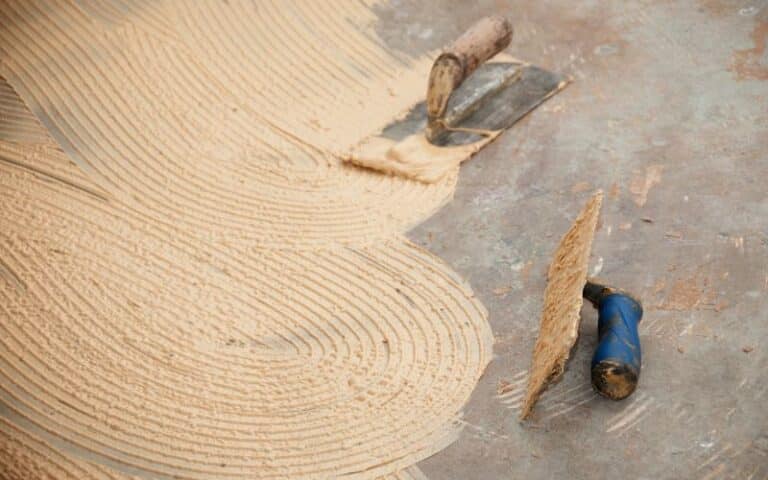Roofing Felt is made from materials that form a protective layer for your roof and your house by extension. These materials are naturally based; on wood, cellulose, or synthetic, from polyester, fiberglass, and paper.
Minerals like sand are added to form a second protective layer.
These mixtures of materials are then coated with a hydrocarbon with adhesive and protective properties. This hydrocarbon is water-resistant, rugged, and durable.
The mineral added protects the roofing felt against extreme weather conditions like wind-driven rain and heat from sunlight. It also prevents the coating from sticking together.
Roofing Felt contains BitumenBitumen, the adhesive hydrocarbon added to either fiberglass or polyester to make it long-lasting. This adhesive creates a protective waterproof layer for your roof. The Bitumen coating makes roofing feel tougher and more durable and increases lifespan.
Ready for a Roofing Quiz?
What Is Bitumen?

Bitumen is a substance that occurs naturally or is obtained from the distillation of crude oil. It’s a dark-brown matter occurring in a liquid to a semi-solid state.
Bitumen is commonly used in road construction, roofing felt underlayment, and medicine, amongst others, because of its waterproofing and adhesive properties.
Bitumen is usually referred to as Asphalt. These terms are used interchangeably to mean a black, sticky, viscous liquid, or semi-solid form of hydrocarbon.
However, Asphalt combines BitumenBitumen, gravel, and sand, while BitumenBitumen is the binding agent that holds Asphalt together. Therefore, bitumen makes a higher percentage component of Asphalt.
The naturally occurring BitumenBitumen is usually found as deposits in the bottom of ancient lakes where organisms decayed and were exposed to heat. It contains many impurities like Sulphur, Iron, and other heavy metals.
On the contrary, BitumenBitumen obtained as a by-product of crude oil is refined through fractional distillation to remove the lighter components of crude oil.
The heavier BitumenBitumen obtained is widely applied in the construction, paper, and printing industries. They’re primarily in use because the cost of extraction and usage is lesser than that of the naturally occurring BitumenBitumen.
Different grades of BitumenBitumen exist. They have been tested to check the viscosity level, penetration value, performance, and bitumen consistency.
These include:
- Natural Bitumen
- Penetration Bitumen
- Cutback Bitumen
- Bitumen emulsion
- Oxidized Bitumen
- Viscosity grade Bitumen
These types of BitumenBitumen have wide applications, and these include:
- Road construction
- Roofing Felt
- Pipe coating
- Painting industry
- Drilling mud and cement
- Chemical products
Bitumen is widely used because of its water-resistant, adhesive, hard, durable, and malleable properties.
Is Roof Felt Bitumen?
Roof felt can also be referred to as Bitumen, Bituminous or Bitumen felt. This is so because, as earlier stated, roofing felt contains BitumenBitumen, a very significant substance that protects roof decks.
Roofing Felt does not contain only bitumen, but because of its prominent usage, it is referred to as bitumen felt.
However, BitumenBitumen has some drawbacks, in that it makes roofing feel toxic. Torch-on roofing felt is installed using heat, and this breaks down BitumenBitumen, releasing harmful substances which can irritate the lungs.
This is harmful to humans and animals when released into the environment. Therefore, while installing the roofing felt, You should take extreme caution to prevent this.
Also, you can install roofing felt without heating. This is done by spreading it over the flat roof and holding it in place with clips or roofing nails.
Bitumen roofs are commonly used these days for their durability and cost-effectiveness. However, there are other types of roofing underlayment.
Roofing underlayment is essential as it seals your roof from the adverse effects of the elements. Wind-driven rain can pull off your roof, but your roof is left intact with the added protection.
Roof felt underlayment is the most commonly used because of its bituminous properties.
Asbestos roofing felt has also been used far back in the 20th century, but it’s in limited use today because it causes mesothelioma lung cancer.
Asbestos felt is used as underlayment in floors and roofs and also in paper mills as it provides heat insulation and water resistance.
Felt tar paper is also used for roofing underlayment, but it is different from roofing felt as it is impregnated in tar instead of BitumenBitumen.
Other forms of roof underlayment include:
- Asphalt-saturated felt;
- Rubberized Asphalt
- Non-bitumen synthetic.
Is Bitumen Same As Felt?
Bitumen is not the same as felt. Bitumen is an adhesive hydrocarbon that serves a broad purpose in industries, including but not limited to road and roofing construction.
On the other hand, felt is made from fibrous material, pressed and matted by applying heat to form a thick and flexible material. Felt is widely used in the garment and footwear industries and building construction.
Felt can be made in a single layer or as thick as 6 inches for use in heavy industries. In addition, it can serve as a covering or coating to protect roof decks from the elements.
Bitumen is usually added to roofing felts for additional waterproofing and protection. Felt tar paper is a form of felt that serves the same purpose.
Similarities Between Bitumen And Felt
- They both have insulating properties
- They are both water-resistant
- They are both used in the construction industries
- They are good absorbers
- They both have applications in medicine; rayon felt can be used in medical application
- They are both resistant to harsh weather conditions
Differences Between Bitumen And Felt
#1. Bitumen
- It’s a viscous liquid hydrocarbon.
- It’s naturally occurring or can be refined from crude oil
- It can be used as fuel
- It contains impurities like Sulphur and other heavy metals
- Exposure to BitumenBitumen is toxic to humans
#2. Felt
- It’s a solid material made from matted fibrous material
- It doesn’t occur naturally but is made from natural fibers or synthetic fibers
- You cannot refine it from crude oil
- It cannot be used as fuel
- It doesn’t contain heavy metals
- Felt, when mixed with BitumenBitumen, becomes toxic on exposure to heat.
Conclusion
Bitumen in roofing felt is a crucial adhesive that does a lot of good to your roof decks. Apart from its water-resistant properties, it’s durable and long-lasting.
Although it can make roofing feel toxic if not installed with caution, It’s a suitable replacement for asbestos roofing. Asbestos is harmful to the environment, causing mesothelioma lung cancer in humans.






